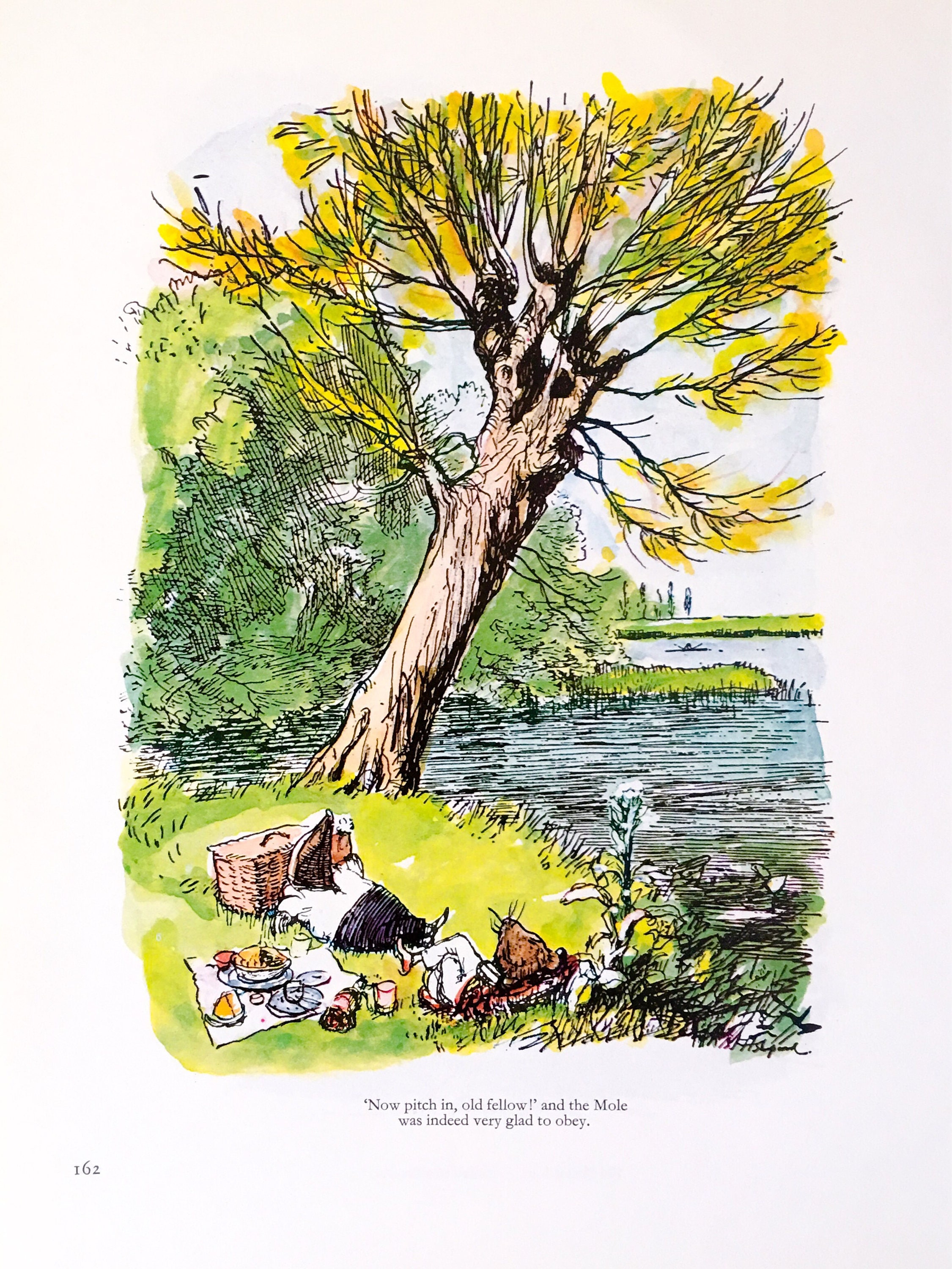

Within the text, the reader discovers two tales, interwoven. So The Wind in the Willows is a tale steeped in nostalgia, and inspired by a father's obsessive love for his only son. When Grahame finally retired from the Bank (as secretary) in 1908, he could concentrate on the stories he had been telling his son, the stories of the Thames riverbank on which Grahame himself had grown up. In 1899, Grahame married and had one child, a boy named Alastair who was troubled with health problems and a difficult personality, culminating in the boy's eventual suicide, the cause of much parental anguish. The text of The Wind in the Willows also encrypts a family tragedy. At that point, Grahame was employed by the Bank of England but, still in his 20s, was publishing stories in literary magazines, work that became collected in Dream Days (1895) and an even more successful publication, The Golden Age (1898). First, it is the work of a writer who had known considerable success in the 1890s as a young contemporary of Oscar Wilde, and who was also an admired contributor to the literary quarterly The Yellow Book. Chapter seven, "The Piper at the Gates of Dawn", is also the name of Pink Floyd's first album in 1967.Ī sentimental British favourite, The Wind in the Willows is a far more interesting book than its popular and often juvenile audience might suggest. Endlessly recycled, in print, cartoon and cinema, the ideas and images of Kenneth Grahame's masterpiece recur in the most unlikely places.


It may be best for children who are adventurous readers and enjoy stories about the countryside.The Wind in the Willows, known to many readers through theatrical adaptations such as Toad of Toad Hall, belongs to a select group of English classics whose characters (Rat, Mole, Badger and Mr Toad) and their catchphrases ("messing about in boats" "poop, poop!") require no introduction. Honestly, I can't think of a book that's more fun to read aloud, in terms of language and character. It was quite an innocuous expression at the time, which is something you can easily explain to a child instead of having an attack of the vapors. A few more readings and the context will make the meanings perfectly clear.Īlso, good grief, "silly ass" in a book published in 1908 isn't swearing. There are plenty more words she likely doesn't completely grasp, but reading aloud allows the meaning to come through, and she's entirely able to keep up with the story. I'm reading it to a six-year-old with an unusually large vocabulary and still have to stop to define a word once a page or so, and it's fine. The vocabulary isn't so much old-fashioned as advanced-Grahame writes with the complete certainty that his readers will figure it out as needed. A remarkable, beautifully written classic story of friendship, feeling, and impulse control, with plentiful messing about in boats.


 0 kommentar(er)
0 kommentar(er)
